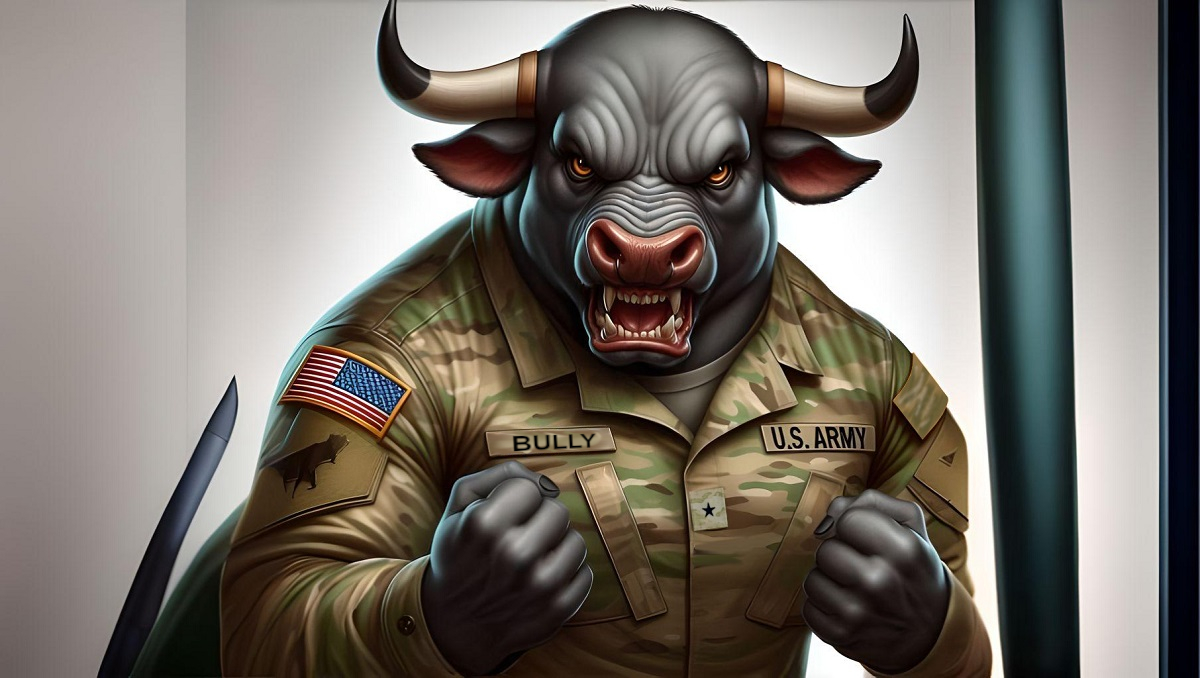
“Nothing destroys more relationships, teams or companies than insecure people in power.”
Jim VandeHei – Axios
A little insecurity is a good thing. Greater insecurity, particularly in senior leaders, can result in cascading leadership failures, an abysmal command climate, plus toxic behavior that can destroy not only individual soldier morale, but can tear apart teams. Throughout my career, I have had brilliant leaders to respect, follow, and emulate. And I have had others who were less than secure in their role, even if they appeared effective. In my observation, leaders who compartmentalized or altered their values and behaviors to fit a given audience exhibited greater insecurity, which led to poor outcomes for themselves and their organizations.
The Army has refined its talent management process over the past several years. While doing so, it continued studying the long-term effects of the Leadership Requirements Model. There is no question the Army seeks, selects, and rewards officers and NCOs who display discipline, humility, sound judgment, and selflessness. But not all leaders always embrace all these values.
Many leaders compartmentalize their behavior, acting one way at work, another at home with the family, and still another when communing with friends and colleagues. This can lead to behavioral extremes when certain guardrails are in place, such as being away on temporary duty or being in certain leadership or staff roles. Confusion can result in situations that mix the audiences in which an individual’s nuanced responses to stimuli typically differ. Compartmentalization can also result in a leader’s inability to ask for help when needed or when uncertain about decision-making.
Compartmentalization can potentially result in extreme insecurity – discomfort when assuming a new senior leadership role, concern over one’s technical knowledge in an arena outside the norm of one’s previous experiences, worry over the need to appear in control, and fear of appearing inept. I witnessed insecurity’s negative impacts throughout my career, oftentimes in uncertain leaders who were oblivious to the chaos they created around them and who did not understand the negative command climate they themselves created or unwittingly sustained.
The worst commanders I encountered were those I experienced early in my career, as a lieutenant and young captain, and again in my most senior assignments, when my superiors were of the same rank or one grade higher. There, collegiality was frequently nothing more than a surface relationship; competition and one-upmanship were the norm. And, at the senior-most ranks, insecurity was at times the most intense. Many in my cohort recognized this trend.
One type of insecure senior leader epitomized selfishness with an “it’s all about me” ethos – the opposite of humility. This type is overconfident; has perhaps been selected for promotion one or more times below the zone; believes he is smarter, faster, and better than his peers and subordinates; thinks himself faultless in decision-making; and expects that his brilliance should continue to be recognized. This person does not really see his subordinates as anything other than a means to his end – the next job, the next promotion, the next round of applause. This type of leader is not personally involved or invested in his subordinates’ success. His tours in high profile jobs may be abbreviated — to claim early victory and leave the field before a rout.
The next degree of leadership insecurity takes the hubris of the “Me” leader to another level. This boss needs to be surrounded by subordinate commanders and staff he trusts, and only those he trusts. These often have personnel discussions that begin with, “I have a buddy…” and “We’ve been friends since we were cadets…” so, “I want him as my Aide, Secretary of the General Staff, Staff Judge Advocate, etc.” I had one boss who asked me to drop my application for a certain position because he had promised his ‘buddy’ he would give the job to someone else. He implied that while he recognized I was perhaps the most qualified for the position, his relationship with the buddy he trusted was more important than selecting the best candidate. I have had other friends who were ousted by the “buddy” system as well. Unfortunately, this means there is little opportunity for new blood to enter a senior leader’s circle and perhaps provide a different perspective than that of the longstanding confidants.
The ultimate level of insecurity is the most dangerous. This is the boss who on the surface does not appear insecure, who always supports and agrees with his superiors. He may complain about those superiors to his peers, but he enthusiastically poisons the well when a perceived rival attempts to either enter or leave his circle. Others, he quietly sets up to fail. My personal experience with this type of boss was really a master’s class in how to create doubts that can taint credentials. While on temporary duty, he would call his peers and ask them how I, his deputy, was doing, while acting in his stead. He managed to sound concerned and solicitous while sowing the seeds of my perceived incompetence across the Army staff. It was very effective. Others told me they experienced similar treatment and knew their days were numbered once the boss seemed to see them as a competitive threat.
This type of leader listens eagerly to gossip about superiors, peers, and subordinates outside his circle of trust, often adding his own negative impressions. He limits personal interactions with subordinates (i.e., does not conduct performance counseling sessions) and typically gives faint, if vague praise about mission successes and unit accomplishments. The performance appraisals he writes are laudatory on the surface, to stave off potential complaints, but they are also nearly always late. He holds them back, often for months after a due date, potentially impacting a subordinate’s file before promotion or selection boards.
I witnessed insecurity’s negative impacts throughout my career, oftentimes in uncertain leaders who were oblivious to the chaos they created around them and who did not understand the negative command climate they themselves created or unwittingly sustained.
This boss will not confront subordinates and does not provide direct feedback. He or she expresses him or herself daily, not through tantrums or screaming, but through more subtle and passive aggressive actions, such as ‘forgetting’ to invite certain staffers or commanders to his meetings. He may not recommend others for certain jobs, and may even direct that some who may have inadvertently offended him be sent to less than plum temporary assignments, simply to remove them from the command. It is a subtle type of harassment that leaves subordinates feeling isolated or wondering why external observers ask, “What did you do to make the boss so angry?”
There is no good answer. At times, the person targeted for sidelining may not even be aware their reputation is on the line. That makes them likely to fall for the boss’s ruses. One senior leader told a certain subordinate commander’s senior rater that the subordinate would request an office call so that he could make a case for having his orders extended. The subordinate had made the mistake of confiding his intentions to the senior leader, hoping for guidance and support. The senior leader signaled his support, but he had no intentions of providing any.
Unaware, and with all good intentions, the subordinate did just that. He requested an office call with the senior rater. It was an innocent request, devoid of issue or private agenda, but the warning had been proven true. The senior rater denied the request; the subordinate’s trustworthiness was in question; and the boss’s ability to make predictions appeared infallible. It did not appear as retaliation, but it was, nevertheless. For what, the officer affected never knew. The decision was final. There was no way to appeal it and time ran out. His orders ended and he left the unit.
I have worked for several of this final type of toxic leader — the kinder, gentler, and very insecure bully boss. There is no recourse here, no way to improve the relationship, no way to succeed. The best thing to do is to run, request reassignment, and move out, before the rating period ends. On one occasion, I chose to stay in a negative situation with a difficult boss, to protect those who worked for me. That. Didn’t. Work. The result was that this leader undermined me, and very publicly so, with my own team. He had done this to others in the past, and I should have learned from those examples. But I didn’t. Of course, I did survive, and I did leave. But I was reassigned to a position with limited authority and little opportunity to demonstrate success. Plus, the new position was physically located far, far away from the boss’s castle. He had won. And one of his ‘buddies’ took my place. Not long afterwards, he was promoted again. A learning experience.
A year or so later, I was offered a Senior Executive Service position in the Office of the Secretary of Defense. The Assistant Secretary of Defense (ASD), a retired general officer, had a searing reputation as a toxic leader. Many of his direct reports appeared miserable in their positions. All of them were retired general officers and distinguished leaders in their own right, now reduced to walking on eggshells in his presence, worried about being publicly berated in staff meetings, and ultimately afraid of retaliation. The week before I was to start this job, the ASD summoned me to his office and proceeded to warn me to ‘watch my back.’ He then asked me to sign a counseling statement, noting it would be the first of many. This was not a warning to look out for others, he was telegraphing the truth: he was planning to make my tenure miserable as well.
I walked away. Sometimes that is the best thing to do. But sometimes, walking away is just not possible. There is nothing to do but hunker down and give your best. But at least one can recognize the signs of toxic leaders, their techniques, and their habits. They are still there, in many mission-critical formations. An insecure leader may talk about how others have done them wrong and how they have avenged themselves. You may notice their trusted colleagues, few though they may be, appearing likewise insecure. Obviously confident and good leaders may be less likely to be supportive of those who appear insecure, selfish, and simply mean-spirited.
Can the reinvented leader selection process guarantee that toxic leaders have been weeded out before reaching battalion or brigade command level? Time will tell. The process itself will continue to be refined and reinforced. A recent book, Generals and Admirals, Criminals and Crooks: Dishonorable Leadership in the U.S. Military details diverse stories of dishonorable leaders over the past century. It is instructive reading, as are many analyses of how certain leaders fail, but can it potentially also serve as prevention? As the U.S. Army seeks the best leaders possible, it can only be more persuasive to mentor, coach, and lead the next generation of leaders, to develop them, and to teach them the outcomes of any failure on their part to adhere fully to the values our formation espouses. America’s sons and daughters deserve the best we can give them.
AUTHOR’S NOTE: The examples cited in this article are composites of actual experiences, my own and those of others.
Mari Eder is a Featured Contributor to WAR ROOM. She is a retired major general in the U.S. Army and an expert in public relations and strategic communication.
The views expressed in this article are those of the author and do not necessarily reflect those of the U.S. Army War College, the U.S. Army, or the Department of Defense.
Photo Credit: AI generated by Bing





MG (ret.) Eder provides an excellent theoretical overview of the situation that has prevailed at one of the USAWC’s SCIPs for many years. While the director and deputy sometimes contribute to the toxic leadership (sometimes they’re pretty good), the next layer of management has consistently distinguished itself by a combination of the Peter Principle, vaunting ambition twinned with appalling ignorance of technics, cronyism, cultivation of lackeys, long tenures in positions that have become sinecures, and, of course, insecurity so palpable that you can spread it on your toast and eat it. Some of the rank and file actually seem to relish imbibing that insecurity, interestingly. Recently there was a coup d’etat of sorts against an extremely toxic director, with the equally toxic operations officer having bailed out a few months before (did lingering IG cases have something to do with that?) and one of the toxic division directors (people in his division left faster than he could replace them) leaving around the same time as the director, probably not of his own will. That is good, of course, but only as far as it has gone. Problems still abound in this SCIP of seemingly perpetual despair and depression, as the toxicity has not been completely extirpated and thus can revivify. So, is the USAWC prepared to follow up on its commitment to cultivating good leadership at this SCIP? The challenge awaits.